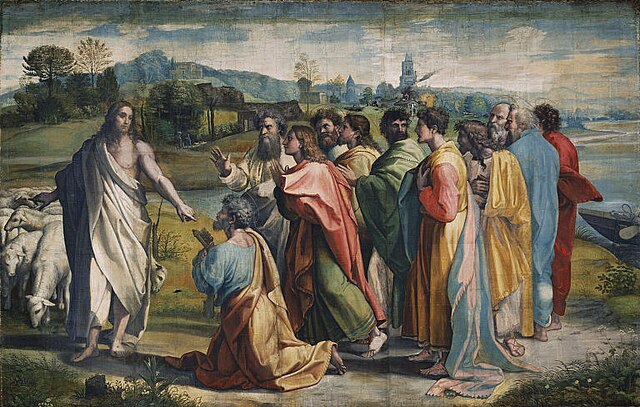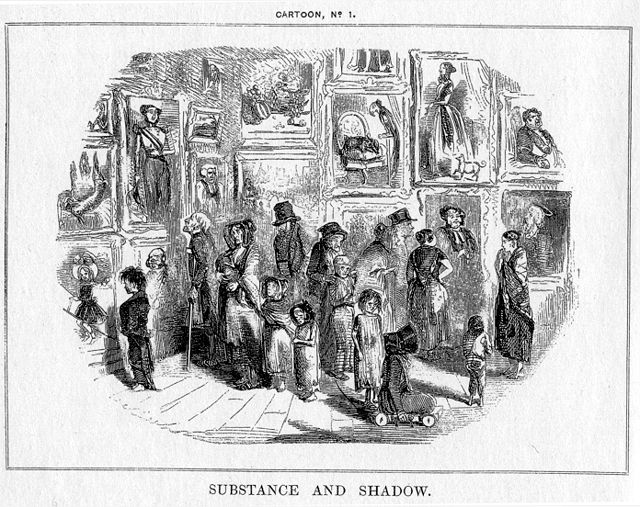A caricature is a rendered image showing the features of its subject in a simplified or exaggerated way through sketching, pencil strokes, or other artistic drawings. Caricatures can be either insulting or complimentary, and can serve a political purpose, be drawn solely for entertainment, or for a combination of both. Caricatures of politicians are commonly used in newspapers and news magazines as political cartoons, while caricatures of movie stars are often found in entertainment magazines.
Caricature of Aubrey Beardsley by Max Beerbohm (1896), taken from Caricatures of Twenty-five Gentlemen
Ancient Pompeiian graffiti caricature of a politician
A Caricature Group, c. 1766, by John Hamilton Mortimer
James Gillray's The Plumb-pudding in danger (1805), which caricatured Pitt and Napoleon, was voted the most famous of all UK political cartoons.
A cartoon is a type of visual art that is typically drawn, frequently animated, in an unrealistic or semi-realistic style. The specific meaning has evolved, but the modern usage usually refers to either: an image or series of images intended for satire, caricature, or humor; or a motion picture that relies on a sequence of illustrations for its animation. Someone who creates cartoons in the first sense is called a cartoonist, and in the second sense they are usually called an animator.
Christ's Charge to Peter, one of the Raphael Cartoons, c. 1516, a full-size cartoon design for a tapestry
John Leech, Substance and Shadow (1843), published as Cartoon, No. 1 in Punch, the first use of the word cartoon to refer to a satirical drawing
Nast depicts the Tweed Ring: "Who stole the people's money?" / "'Twas him."







